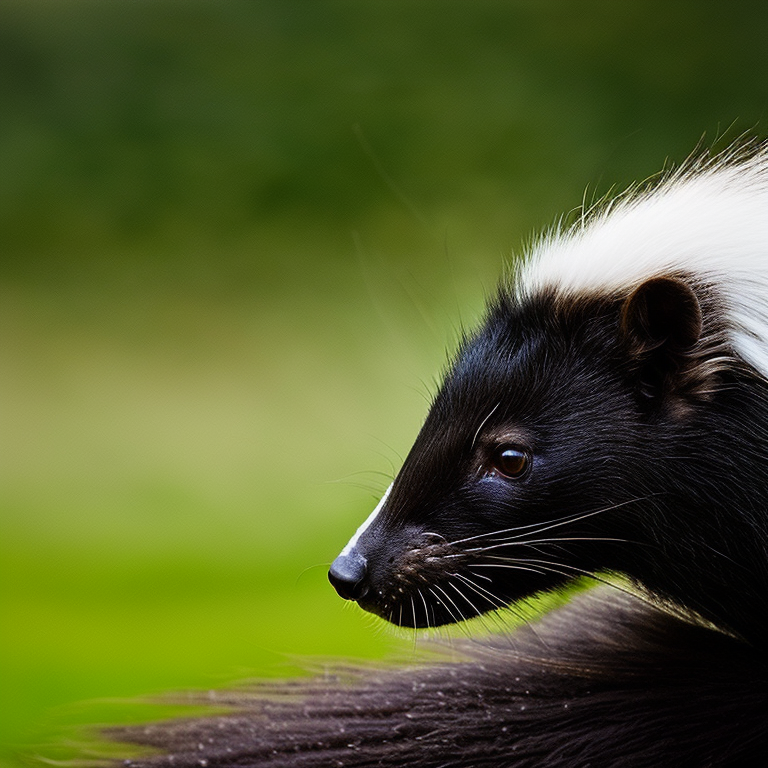Rusty Dawg’s Skunk Encounter: A Stinky Lesson in Pet Parenting

As a pet owner, I’ve had my fair share of moments that left me shaking my head and questioning my sanity. But nothing could have prepared me for the unforgettable night when Rusty Dawg, our adventurous four-legged family member, had a close encounter with a skunk. It was a comedy of errors, a lesson in pet parenting, and a skunky story I’ll never forget.
It all began with my well-intentioned advice to my wife and stepson. “Don’t just let Rusty out the door to ‘do his business,'” I cautioned. “Use the harness, because I’m not chasing him around the neighborhood again if he decides to chase a rabbit.” I thought I had it all figured out, but that evening, I succumbed to sheer madness and decided to take Rusty out without his harness. In hindsight, that was the first mistake.
Rusty, my furry accomplice in chaos, took off like a rocket, bolting after something in the distance. I watched in awe as he disappeared into the night, a blur of fur and excitement. Just 20 seconds later, he returned at full speed, his face wearing an expression of pure distress. And then it happened: He began rubbing his face on the ground. I knew, without a shadow of a doubt, what had occurred. Rusty had been sprayed by a skunk, and my nose confirmed it moments later.
Now, I was faced with a predicament: how to rid my beloved canine companion of the unbearable stench. My first instinct was to take Rusty downstairs to the utility sink and wash him with Dawn dish soap and tomato juice, a remedy I’d heard about countless times. However, it quickly became evident that this combination wasn’t working as effectively as I’d hoped.
In desperation, I turned to my beautiful wife and asked her to find a solution on YouTube. She found a video from a veterinarian that began with these words: “Do not try to bathe the dog or get it wet, and do not use tomato juice.” By this point, it was too late, and I couldn’t help but feel even more idiotic for not researching the correct course of action beforehand.
After multiple baths, a flurry of “colorful language,” and a lot of frustration, I finally managed to reduce the stench to a barely tolerable level. It was far from ideal, but it was an improvement. If only I had known what to do from the beginning.
So, to save others from the same skunky fate, I’d like to share the proper steps to remove the odor from a freshly skunk-sprayed dog:
Step 1: Gather Your Supplies Before you start, make sure you have everything you need: gloves, old towels, paper towels, a large plastic container or tub, baking soda, hydrogen peroxide, and dish soap (preferably Dawn).
Step 2: Contain the Dog Keep your dog outside if possible to avoid spreading the smell inside your home. If the weather doesn’t permit it, use a contained area that’s easy to clean.
Step 3: The De-skunking Mixture In a large plastic container or tub, mix the following ingredients:
- 1 quart of hydrogen peroxide
- 1/4 cup of baking soda
- 1 teaspoon of dish soap
Step 4: Apply the Mixture Wearing gloves, carefully apply the mixture to your dog’s affected areas (usually the face and neck) while avoiding their eyes, nose, and mouth. Gently massage it into their fur, making sure to penetrate through to the skin.
Step 5: Let It Sit. Allow the mixture to sit on your dog’s fur for about 5 to 10 minutes. This will help neutralize the skunk odor.
Step 6: Rinse Thoroughly Rinse your dog thoroughly with water, making sure to remove all of the mixture. Be cautious not to get any solution into your dog’s eyes.
Step 7: Reassess If the skunk odor is still present, you may need to repeat the process. It may take a few applications to completely eliminate the smell. Remember, patience is key when dealing with a skunk-sprayed dog. It’s also essential to act quickly to prevent the odor from permeating your home. In Rusty Dawg’s case, my initial mistakes led to quite the adventure, but in the end, we both learned valuable lessons about preparedness, pet care and language colorful enough to make a sailor blush.
~Nate

